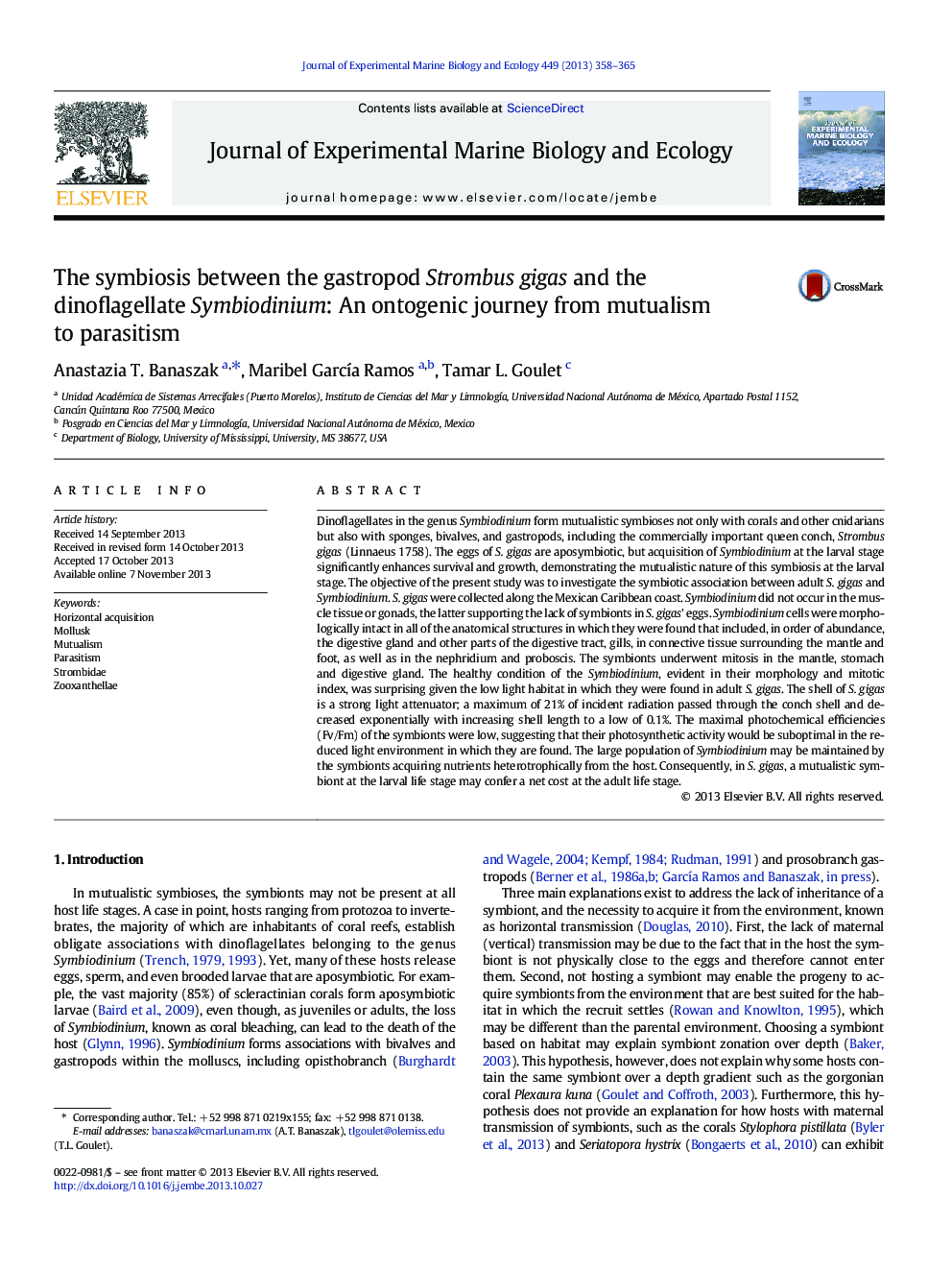| کد مقاله | کد نشریه | سال انتشار | مقاله انگلیسی | نسخه تمام متن |
|---|---|---|---|---|
| 6304337 | 1618426 | 2013 | 8 صفحه PDF | دانلود رایگان |
عنوان انگلیسی مقاله ISI
The symbiosis between the gastropod Strombus gigas and the dinoflagellate Symbiodinium: An ontogenic journey from mutualism to parasitism
دانلود مقاله + سفارش ترجمه
دانلود مقاله ISI انگلیسی
رایگان برای ایرانیان
موضوعات مرتبط
علوم زیستی و بیوفناوری
علوم کشاورزی و بیولوژیک
علوم آبزیان
پیش نمایش صفحه اول مقاله

چکیده انگلیسی
Dinoflagellates in the genus Symbiodinium form mutualistic symbioses not only with corals and other cnidarians but also with sponges, bivalves, and gastropods, including the commercially important queen conch, Strombus gigas (Linnaeus 1758). The eggs of S. gigas are aposymbiotic, but acquisition of Symbiodinium at the larval stage significantly enhances survival and growth, demonstrating the mutualistic nature of this symbiosis at the larval stage. The objective of the present study was to investigate the symbiotic association between adult S. gigas and Symbiodinium. S. gigas were collected along the Mexican Caribbean coast. Symbiodinium did not occur in the muscle tissue or gonads, the latter supporting the lack of symbionts in S. gigas' eggs. Symbiodinium cells were morphologically intact in all of the anatomical structures in which they were found that included, in order of abundance, the digestive gland and other parts of the digestive tract, gills, in connective tissue surrounding the mantle and foot, as well as in the nephridium and proboscis. The symbionts underwent mitosis in the mantle, stomach and digestive gland. The healthy condition of the Symbiodinium, evident in their morphology and mitotic index, was surprising given the low light habitat in which they were found in adult S. gigas. The shell of S. gigas is a strong light attenuator; a maximum of 21% of incident radiation passed through the conch shell and decreased exponentially with increasing shell length to a low of 0.1%. The maximal photochemical efficiencies (Fv/Fm) of the symbionts were low, suggesting that their photosynthetic activity would be suboptimal in the reduced light environment in which they are found. The large population of Symbiodinium may be maintained by the symbionts acquiring nutrients heterotrophically from the host. Consequently, in S. gigas, a mutualistic symbiont at the larval life stage may confer a net cost at the adult life stage.
ناشر
Database: Elsevier - ScienceDirect (ساینس دایرکت)
Journal: Journal of Experimental Marine Biology and Ecology - Volume 449, November 2013, Pages 358-365
Journal: Journal of Experimental Marine Biology and Ecology - Volume 449, November 2013, Pages 358-365
نویسندگان
Anastazia T. Banaszak, Maribel GarcÃa Ramos, Tamar L. Goulet,